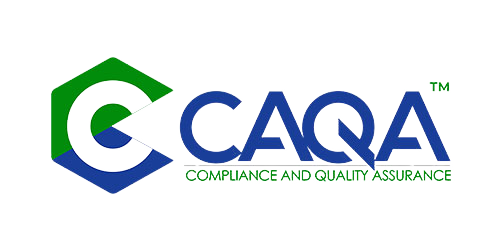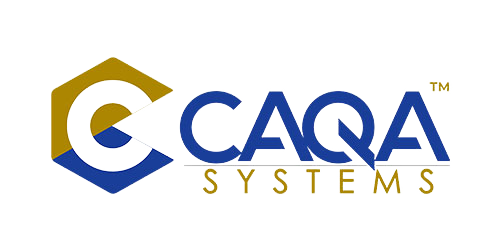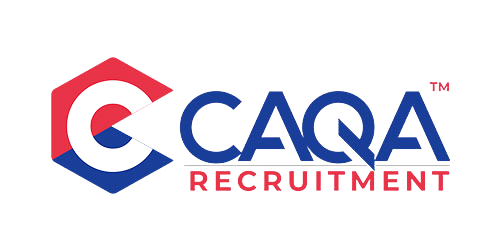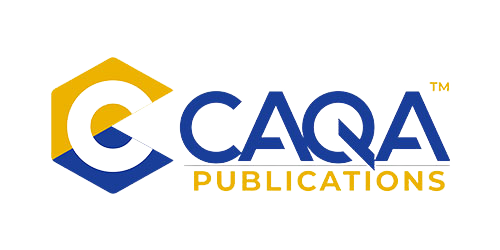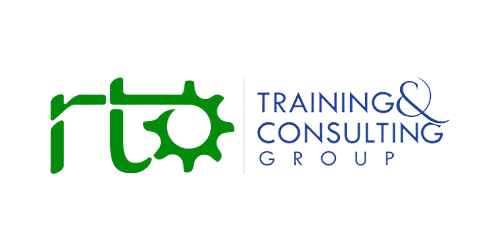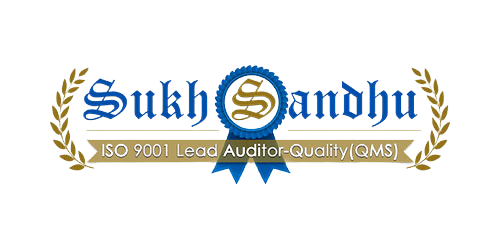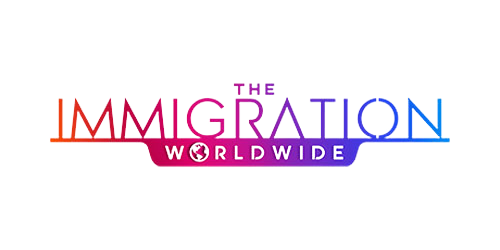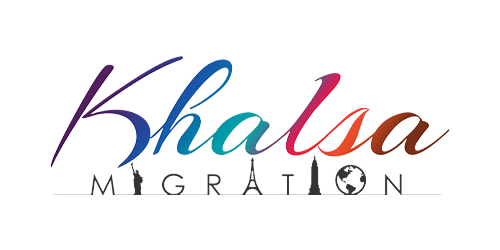How Training Providers Can Turn Workplace Disagreements into Opportunities for Growth
In the complex ecosystem of Registered Training Organisations (RTOs), conflict is inevitable. When trainers, assessors, administrators, compliance managers, and leadership teams collaborate under the pressure of regulatory requirements, funding deadlines, and student expectations, tensions naturally arise. Whether it's disagreement over assessment strategies, resource allocation, training approaches, or compliance interpretations, conflict can either disrupt operational effectiveness or—when handled skillfully—become a catalyst for positive organisational change.
Effective RTO leaders don't fear conflict—they manage it constructively. The ability to navigate and resolve conflicts professionally has become increasingly recognised as a defining characteristic of successful training organisations. Research into educational leadership consistently shows that how disagreements are addressed significantly impacts both staff engagement and student outcomes. This article explores conflict management specifically within vocational education and training contexts, offering practical strategies, professional insights, and a clear framework that RTO leaders can use to resolve disputes while strengthening their organisational culture.
Understanding Conflict in Training Organisations
Before implementing resolution strategies, it's essential to recognise the unique sources and manifestations of conflict within RTOs. The vocational education sector presents specific challenges that create fertile ground for disagreement.
The regulatory environment itself often generates tension. Compliance requirements can be interpreted differently, creating disagreement between those responsible for quality assurance and those focused on training delivery. One compliance manager from a large metropolitan RTO explains, "I've frequently seen conflict arise when trainers feel that compliance procedures are hampering their ability to deliver student-centred training. Meanwhile, the compliance team is focused on protecting the organisation from audit risks. Both perspectives are valid, but they create natural friction."
Pedagogical differences represent another common source of conflict. Trainers may have fundamentally different views on assessment methods, delivery approaches, or reasonable adjustments for students. These differences often reflect deeply held professional values rather than simple preferences, making them particularly challenging to resolve.
Resource constraints create inevitable competition. With limited funding, classroom space, equipment, and administrative support, departments and programs within RTOs frequently find themselves competing for finite resources. The introduction of new training packages or funding arrangements often exacerbates these tensions as organisations navigate change.
Cross-departmental dependencies also generate friction. When marketing promises certain training experiences that delivery teams struggle to fulfil, or when student support services and trainers have different expectations about their respective roles, conflict naturally emerges at these organisational boundaries.
Finally, the increasing diversity within both staff and student cohorts means that cultural and communication differences frequently contribute to misunderstandings. Different expectations about feedback, authority, and appropriate workplace behaviour can lead to unintended conflict, particularly in RTOs serving diverse communities.
The Cost of Mismanaged Conflict
For RTOs, poorly managed conflict carries particularly high costs. Beyond general workplace impacts like decreased morale and reduced productivity, conflict in training organisations can directly affect educational quality and compliance outcomes.
When assessment teams are in conflict with trainers, assessment validation processes suffer, potentially leading to compliance breaches. When administration staff and trainers are at odds, student support falters, affecting both completion rates and student satisfaction. When leadership teams experience unresolved conflict, strategic planning becomes impossible, leaving the organisation vulnerable to market and regulatory changes.
"We once had an ongoing disagreement between our business development team and our training delivery team," shares a CEO of a regional training provider. "The business team was securing contracts with time frames that the delivery team considered unrealistic. Rather than addressing this directly, both teams worked around each other, communicating poorly. The result was a major contract we nearly lost because we couldn't deliver as promised. That potential financial hit finally forced us to address the underlying conflict."
Another significant concern is staff turnover. The vocational education sector already faces challenges in recruiting and retaining qualified trainers and assessors. When workplace conflict goes unaddressed, it accelerates the departure of valuable team members. One RTO manager noted that exit interviews consistently showed that unresolved workplace conflict was a key factor in staff decisions to leave, more significant than salary concerns in many cases.
Perhaps most concerning is the impact on students. When staff are engaged in ongoing conflict, students inevitably perceive the tension, which affects their learning experience and confidence in the institution. For vulnerable student populations, including those with previous negative educational experiences, this atmosphere can significantly impact engagement and completion.
A Professional Approach to Conflict Resolution
To address conflict effectively within RTOs, leaders must adopt a structured, empathetic, and proactive approach that acknowledges the unique characteristics of educational environments.
Early Identification and Assessment
Effective conflict management in a training organisation starts with the early recognition of potential issues. Leaders should remain attentive to signs such as shifts in communication patterns, an uptick in student complaints, delays in document submissions, or unexpected resistance to collaborative activities. Proactive strategies like regular team check-ins, maintaining an open-door policy, and providing anonymous feedback channels can help surface concerns before they escalate into more significant problems.
Once a potential conflict is identified, the next step is a careful assessment. This process involves gathering information from all involved parties while maintaining a neutral stance. The initial assessment is crucial, as it helps determine whether the situation stems from a simple misunderstanding, a legitimate difference in professional judgment, or a deeper interpersonal issue that may require a different resolution approach.
During the assessment phase, it is important to focus on observable behaviours rather than speculating about motivations. Leaders should document specific instances rather than relying on generalisations and clearly identify the impact of the conflict on operations, compliance, or student outcomes. This evidence-based approach helps to depersonalise the situation and keeps the focus on professional and organisational concerns, paving the way for constructive resolution.
Creating Psychological Safety
For conflict resolution to be effective within training organisations, it is essential that all participants feel safe to express their perspectives without fear of retribution or judgment. This sense of psychological safety is particularly important in hierarchical environments, where power dynamics can often inhibit open communication. Establishing clear ground rules at the outset of any conflict resolution process is a widely recommended practice. These rules typically include commitments to confidentiality, speaking from personal experience rather than making accusations, and focusing discussions on future solutions rather than assigning blame for past actions. Such parameters help create a respectful and supportive environment, encouraging honest dialogue and productive problem-solving.
Initial separate meetings with each party can be beneficial, allowing individuals to fully share their perspectives and concerns in a private setting before any group discussion takes place. During these conversations, the use of active listening is crucial. Techniques such as paraphrasing to confirm understanding, acknowledging emotions without judgment, and summarising what has been heard help ensure that all parties feel heard and understood. This approach not only builds rapport and trust but also reduces emotional intensity, making it easier to move towards a constructive resolution.
Conflict resolution training programs and professional guidelines consistently highlight the importance of psychological safety, clear ground rules, and active listening as foundational elements for managing and resolving workplace disputes. By fostering an environment where individuals can communicate openly and respectfully, organisations are better equipped to address conflicts early, prevent escalation, and promote a culture of continuous improvement and collaboration.
Applying Appropriate Resolution Approaches
Different conflict situations require different resolution approaches. RTO leaders should be flexible in their methodology, selecting the appropriate strategy based on the nature of the conflict, the relationships involved, and the organisational context.
Collaboration works well when addressing complex issues like assessment design, where multiple perspectives can contribute to a stronger outcome. This approach involves all parties working together to find a solution that addresses everyone's core concerns. While time-consuming, it often produces the most sustainable results for significant issues.
Compromise is effective for resource allocation conflicts, where perfect solutions may be impossible but partial satisfaction is achievable. This might involve negotiating shared access to facilities or equipment, or developing rotation systems for desirable teaching assignments.
Accommodation may be appropriate when the relationship is more important than the specific issue, or when one party recognises their position is less critical. For example, an experienced trainer might accommodate a compliance manager's documentation request, recognising that while burdensome, it serves the important purpose of maintaining registration.
Competition or directive approaches should be used sparingly, but may be necessary when immediate decisions are required or when non-negotiable compliance requirements must be enforced. Even then, explanation and transparency about the process can help maintain relationships.
Avoidance is rarely effective as a long-term strategy, but may be appropriate for genuinely trivial issues or as a temporary measure to allow emotions to cool before addressing the substantive concern.
The CLEAR Conflict Resolution Framework for RTOs
RTO leaders often benefit from structured approaches to conflict management. The CLEAR model offers a straightforward framework that can be applied across different types of educational conflicts:
Clarify the source and nature of the conflict. What specifically is causing tension? Is it a disagreement about assessment practices, resource allocation, compliance interpretation, or interpersonal friction? Gather concrete examples rather than relying on generalisations or second-hand reports.
Listen actively to all perspectives. Each party should have uninterrupted time to explain their viewpoint, concerns, and desired outcomes. As a mediator, demonstrate understanding through paraphrasing and clarifying questions. In the RTO context, this might involve separate meetings with trainers, assessors, administrators, and managers to ensure all voices are heard.
Explore underlying needs and interests. Move beyond stated positions to understand what each party truly needs. For example, a trainer insisting on a particular assessment approach may fundamentally be concerned about maintaining industry relevance, while a compliance manager pushing back may be focused on audit defensibility. Identifying these underlying interests often reveals compatible goals despite surface disagreements.
Agree on a path forward with specific actions. Develop solutions that address the core interests identified. Document who will do what, by when, and how success will be measured. In RTOs, this documentation is particularly important given the compliance-focused culture. Clear agreements prevent future misunderstandings and provide accountability.
Review outcomes and follow up systematically. Schedule check-in points to evaluate whether the agreed solutions are working and make adjustments as needed. This step is frequently overlooked, but is essential for sustainable conflict resolution. Regular review also demonstrates organisational commitment to addressing issues substantively rather than superficially.
"We implemented the CLEAR framework after a particularly difficult period of conflict between our compliance team and our training delivery staff," shares the CEO of a metropolitan RTO. "The structured approach helped depersonalise the issues and focus on systemic solutions. Most importantly, the regular review process built confidence that we were serious about addressing root causes, not just putting band-aids on symptoms."
Communication Techniques for De-escalation
Effective communication is fundamental to conflict resolution in any organisation, but particularly in RTOs where clarity is essential for both compliance and educational quality. Several specific communication techniques have proven especially valuable in de-escalating tensions in educational settings.
Using "I" statements helps express concerns without triggering defensiveness. For example, "I'm concerned that this assessment approach might not meet the evidence requirements in the training package" is more productive than "You're not following the rules with this assessment."
Acknowledging emotions legitimises feelings without necessarily agreeing with positions. Statements like "I can see this issue is frustrating for you" or "I understand you feel strongly about this approach" help participants feel heard while keeping the conversation professional.
Separating facts from interpretations helps clarify misunderstandings. "The documentation was submitted three days after the deadline" is a verifiable fact, while "You don't care about our compliance requirements" is an interpretation that may be incorrect and inflammatory.
Asking clarifying questions promotes understanding and demonstrates engagement. "Can you help me understand why this particular approach is important to you?" or "What specific concerns do you have about the alternative method?" opens dialogue rather than shutting it down.
Focusing on shared goals reframes conflict as collaborative problem-solving. Reminding all parties of their common commitment to student outcomes, organisational sustainability, or quality training can shift perspective from adversarial to cooperative.
Building a Conflict-Resilient RTO Culture
While effective conflict resolution is essential, forward-thinking RTO leaders also work proactively to create organisational cultures that minimise destructive conflict and channel disagreement productively.
Clear role definitions and well-documented processes prevent many conflicts from emerging. When responsibilities are explicitly assigned and workflows are clearly established, the ambiguity that often leads to conflict is reduced. Comprehensive position descriptions, procedural manuals, and regular staff training on systems and processes all contribute to this clarity.
Transparent decision-making processes help staff understand how and why decisions are made, reducing resentment and resistance. This is particularly important for resource allocation, staff assignments, and strategic priorities. When decisions must be made that will disappoint some stakeholders, explaining the rationale and constraints helps maintain trust even amid disagreement.
Regular forums for constructive feedback allow issues to be raised and addressed before they escalate into full conflicts. These might include structured team meetings, anonymous suggestion systems, or scheduled one-on-one check-ins between managers and staff. The key is creating multiple pathways for concerns to be expressed appropriately.
Professional development in communication and conflict management builds organisational capacity. When all staff have basic training in effective communication, emotional intelligence, and conflict de-escalation, minor disagreements are less likely to escalate into significant problems. This investment pays dividends in reduced management time spent on conflict resolution.
Recognition and celebration of diverse perspectives signal that professional disagreement is valued rather than punished. Leaders who publicly acknowledge the value of thoughtful dissent and demonstrate openness to alternative viewpoints model the behaviours they wish to see throughout the organisation.
Case Studies: Conflict Resolution in Action
The principles of effective conflict management are best illustrated through real-world examples from the vocational education sector. These anonymised cases demonstrate how RTO leaders have successfully navigated challenging conflict situations.
Assessment Methodology Dispute
A metropolitan RTO experienced ongoing tension between an industry-experienced trainer and the compliance manager regarding assessment design. The trainer, with 20 years of industry experience, insisted that the compliance requirements were creating artificial assessment scenarios that didn't reflect workplace realities. The compliance manager, concerned about audit findings, maintained that the training package requirements were non-negotiable.
The resolution process began with individual meetings where each party explained their perspective and underlying concerns. This revealed that both shared a commitment to quality training but approached it from different angles. The trainer primarily valued authentic workplace relevance, while the compliance manager focused on defensible evidence collection.
A collaborative workshop was arranged where both parties, along with an external training package expert, reviewed the specific competency requirements together. This resulted in a redesigned assessment approach that maintained compliance while incorporating more authentic industry scenarios. The process also established a protocol for addressing similar issues in the future, creating a template for constructive engagement rather than ongoing conflict.
Resource Allocation Conflict
A regional RTO faced conflict between departments competing for limited resources, particularly simulation equipment and specialised training spaces. The business faculty felt the trades department received disproportionate resources, while the trades instructors argued their equipment needs were inherently more expensive.
Rather than making unilateral decisions, leadership implemented a transparent resource allocation process. Department heads were asked to submit evidence-based proposals showing how requested resources would directly impact student outcomes and organisational priorities. A cross-departmental committee reviewed these requests using consistent criteria, with decisions and rationales documented and shared.
While not all requests could be fulfilled, the transparent process reduced perceptions of favouritism. Additionally, the process revealed opportunities for resource sharing between departments that hadn't been previously considered, creating unexpected efficiencies. The initial conflict, though uncomfortable, ultimately led to improved resource management across the organisation.
Cross-Cultural Communication Breakdown
An RTO serving diverse communities experienced conflict between trainers from different cultural backgrounds who had conflicting expectations about appropriate classroom management and student engagement. What one trainer considered respectful distance, another perceived as disengagement. Similarly, what one saw as a helpful correction, another experienced as public humiliation.
Leadership recognised this as an opportunity for organisational growth rather than merely a problem to solve. They arranged professional development on cross-cultural communication for all staff, featuring external experts and facilitated discussions about different cultural approaches to education.
From these sessions emerged a set of shared principles that acknowledged diverse approaches while establishing minimum expectations for student engagement and feedback. Regular community of practice meetings were established where trainers could discuss challenges and share strategies across cultural perspectives. What began as conflict evolved into a strength, with the organisation eventually developing expertise in culturally responsive training approaches.
When and How to Seek External Support
While many conflicts can be resolved internally, RTO leaders should recognise when external assistance is appropriate. Signs that external support may be needed include:
-
Conflicts that persist despite multiple resolution attempts
-
Situations involving serious allegations or potential legal issues
-
Conflicts directly involving senior leadership, creating inherent conflicts of interest
-
Issues requiring specialised expertise beyond the organisation's internal capability
-
Escalating emotional intensity that internal mediators cannot effectively manage
Options for external support include professional mediators with education sector experience, organisational psychologists specialising in workplace dynamics, or consultants with specific expertise in RTO operations and compliance. Industry associations sometimes offer mediation services for member organisations, and some government agencies provide conflict resolution resources for education providers.
When engaging external support, clear scoping is essential. The external facilitator should understand the specific context, constraints, and desired outcomes. Confidentiality parameters must be established from the outset, and the process for implementing and following up on recommendations should be agreed upon before engagement begins.
Conflict as Opportunity: Transforming Tension into Growth
The most effective RTO leaders recognise that conflict, when handled skillfully, can be a powerful catalyst for organisational improvement. Productive conflict challenges assumptions, surfaces hidden issues, and drives innovation in both educational approaches and operational systems.
"Some of our most significant improvements have emerged from situations that initially presented as conflicts," reflects the CEO of a large multi-campus RTO. "When we had trainers challenging our assessment validation process, the resulting discussions led to a completely redesigned approach that not only satisfied everyone but actually improved our compliance position and student outcomes. Without that initial conflict surfacing the issues, we might have continued with a suboptimal system indefinitely."
This perspective—viewing conflict as potentially valuable rather than inherently problematic—shifts the organisational approach from conflict avoidance to conflict utilisation. It encourages the constructive disagreement necessary for continuous improvement while providing frameworks to ensure that disagreement remains productive rather than destructive.
Conclusion: Building Conflict Resolution into RTO Capability
For RTOs navigating the complex demands of vocational education in a changing regulatory landscape, conflict resolution skills are no longer optional—they are core organisational capabilities. The ability to address disagreements constructively directly impacts compliance outcomes, staff retention, student experience, and organisational agility.
Building this capability requires investment in systems, skills, and cultural development. Clear procedures for raising and addressing concerns, professional development in communication and conflict management, and leadership modelling of appropriate conflict behaviours all contribute to organisational resilience.
"The mark of a mature RTO isn't the absence of conflict," notes a veteran RTO consultant. "It's how quickly and constructively conflicts are addressed. The best organisations I work with don't fear disagreement—they create safe channels for it, address it skilfully when it arises, and learn from it continuously."
For training organisations committed to excellence, this investment in conflict resolution capability pays dividends that extend far beyond peace in the workplace. It creates the conditions for continuous improvement, staff engagement, and, ultimately, enhanced student outcomes. In a sector defined by constant change, the ability to navigate conflict effectively may be the most important capability an RTO can develop.










